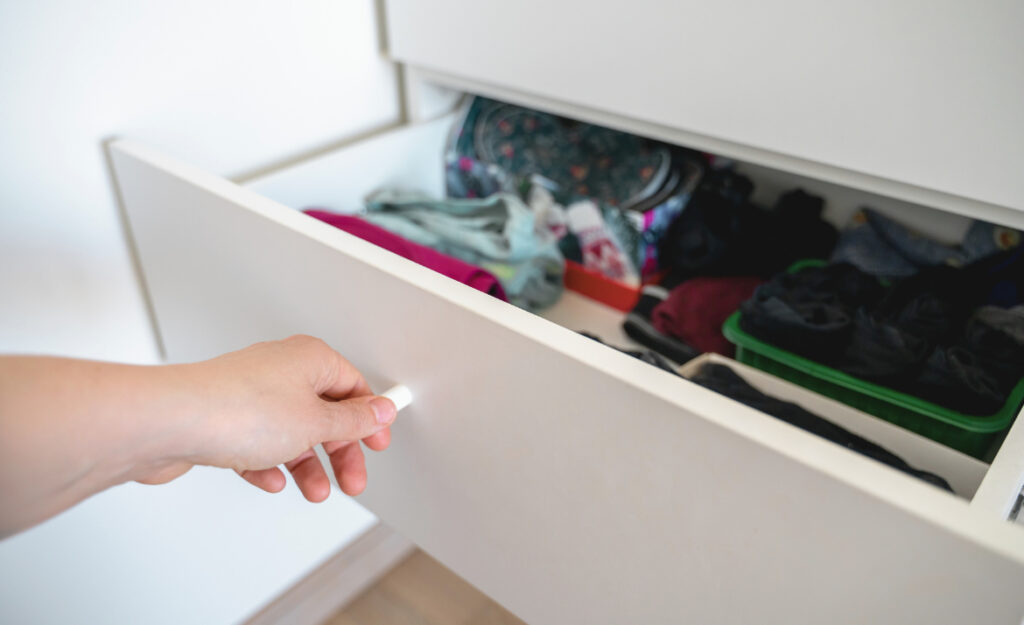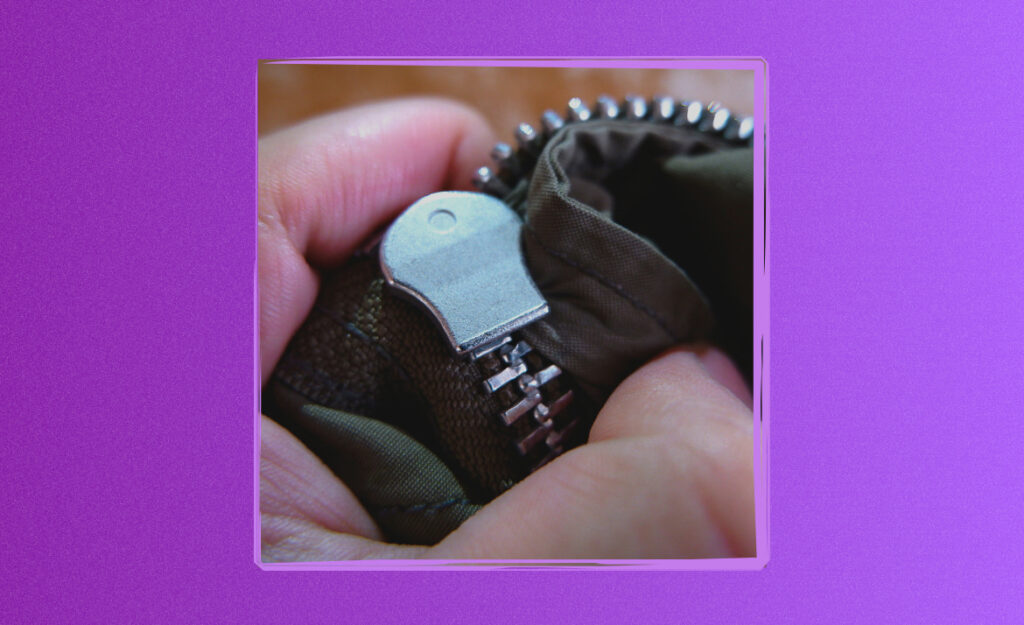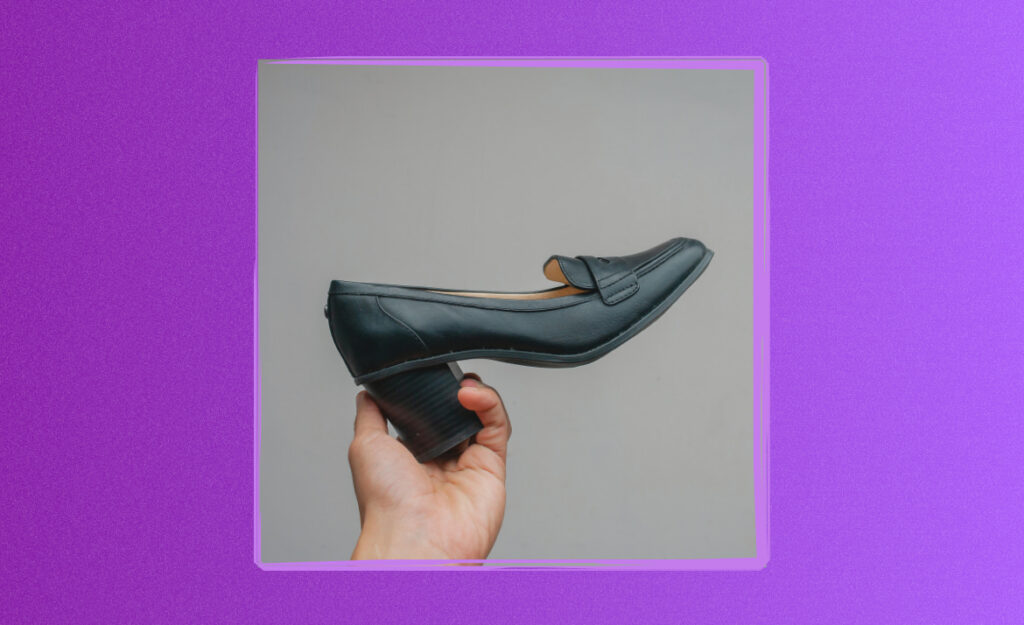
Sticky drawer moments leave us pausing daily tasks—one stubborn drawer can bring the flow of any workspace or kitchen to an abrupt stop. Whether it’s swelling wood, overcrowded contents, or dust-packed rails, most people want a jammed drawer fix now, not after a trip for tools.
Seeing a drawer jam midway can feel frustrating, but it usually signals fixable issues that you can address quickly with hands-on strategies. By understanding the core reasons and applying techniques you can do on the spot, you keep your routine running smoothly.
This guide dives deep into techniques for getting jammed drawers unstuck without reaching for tools. Explore practical steps, detailed scenarios, and specific scripts—no mechanical expertise required. Start reclaiming easy access—read on to restore every stuck drawer in your home or office.

Jammed Lock Fix When You’re in a Hurry: Step-by-Step Relief
Learn step-by-step solutions, prevent future jams, and restore peace of mind when you're pressed for time or facing a stubborn door.Pinpoint The Cause And Evaluate Drawer Blockage Immediately
Identifying what makes your drawer stick allows you to fix jammed drawer cases efficiently. Start by looking for visible obstructions, feeling for resistance spots, and listening for scraping or thumping noises when you nudge the drawer gently.
Get close and inspect: check if anything is caught behind or beneath the drawer. Often, objects fall down and wedge in the back. A pen, old envelope, or stray utensil can jam the mechanism and block movement unexpectedly.
Reading Drawer Signals to Spot Problems Quickly
When a drawer pulls out a little before halting, use gentle wiggling. If it jerks or tilts, there’s likely an object blocking or a rail misalignment. Try shifting weight across the drawer face instead of pulling in one spot to expose the area of resistance.
If you hear a low scraping rumble, the base may be sagging, causing wood to rub on the frame. This happens with heavy drawers full of tools, files, or kitchenware. Addressing the load balance can provide instant relief and restore glide.
Sometimes, the drawer feels loose—wobbling from side to side—signaling worn or missing side guides. A careful touch under the lip may reveal a track that slipped out of its groove. Pinch the sides and push gently to pop it back into place.
Understanding When a Drawer Stops Midway Versus Won’t Move at All
If your drawer starts sliding then halts firmly, assume something blocks its back end or an item is wedged vertically. Visualize how a crowded suitcase bulges and jams a zipper—redistribute the contents with a shake or pat to release the pressure point.
A jammed drawer that won’t budge even a bit typically signals the object is wedged tightly or rails are misaligned. Don’t force movement—it can stretch or break fragile wood seams. Instead, kneel to eye-level, use a flashlight if available, and check all visible gaps for trapped objects.
If you notice the movement changes depending on the pull angle, rails could be off kilter. Move slowly from left to right on the handle and note if one side loosens. If so, steady the steady side and gently lift or lower the loose side to re-seat the rail.
| Drawer Symptom | Likely Cause | Hand-Only Fix | First Action to Try |
|---|---|---|---|
| Jerks/stops partway | Obstruction or misaligned rail | Redistribute contents, wiggle gently | Wiggle sides evenly |
| Stuck closed, won’t move | Wedged object or swollen wood | Shake or pat, apply gentle force across face | Tap front and sides |
| Wobbly or uneven slide | Missing side guide or rail out of track | Push sides inward, pop rail into groove | Lift/lower at sticking spot |
| Scraping sound, resistance | Sagging base, overloaded drawer | Reduce load, shift contents away from low spot | Press up under drawer bottom |
| Drawer face tilts during pull | Loose joint or support issue | Pinch sides, realign as you pull | Palm press both sides, nudge out |
Apply Gentle, Strategic Movements to Loosen Stuck Drawers
Extracting a stuck drawer without tools requires slow, deliberate motions instead of brute force. Lean into patience; the goal is to nudge the blockage or realign parts without risking damage or injury.
Before proceeding, clear surfaces near the drawer and stand so you have steady leverage. Make sure your hands are dry—for a solid grip—and focus on even pressure across the drawer’s face. This reduces stress at any single joint and raises your chance of a smooth fix jammed drawer response.
Coordinated Tug-and-Lift Techniques
Place both palms on either end of the drawer. Pull out slightly and, if it won’t budge, steadily raise one side a bit while easing outward. Switch to the other side and repeat. You’re coaxing the drawer out of a misaligned rail or away from a small obstruction without snapping the frame.
This tactic works well when one drawer edge is tightly caught. Instruct a helper: “I’ll lift here—pull gently there, slowly together.” Coordination is key. This method mimics the way you’d carefully free a jammed shopping cart or suitcase wheel—steady upward nudges instead of yanking.
If resistance remains, gently tap or pat along the drawer’s bottom while pulling. Think of nudging a sticky shoebox lid: small vibrations break the seal without harming the contents.
- Use a palm press at either drawer side, alternating evenly—helps distribute pressure and avoids drawer twists; especially useful when rails stick unevenly.
- Apply slight upward force directly below the sticking spot—mimics prying without a tool; lifts the drawer clear of minor internal obstacles.
- Gently bounce the drawer vertically by tapping underneath—sends micro-vibrations to shift stuck objects, like shaking loose a jammed vending machine snack.
- Shift contents away from tight corners—timely with drawers full of utensils or clothes; a side-to-side shake can release pressure points you can’t see.
- Stabilize the outside frame or open adjacent drawers—locks the cabinet base and keeps your efforts focused on the jammed unit, not the whole structure.
Small, repeated actions are safer and more effective than one big pull. After five to ten careful attempts, reassess. If the drawer budges at all, switch to an outward, even motion until it releases completely.
Stuck Drawer Reset: Empty Out Method Without Tools
If gentle shifts don’t work, pull out what you can access. Use fingertips to grab visible items or scoop from the sides. If the drawer is stuffed or contents have shifted, easing out lighter items—one at a time—reduces weight and internal pressure, bringing instant results for a fix jammed drawer effort.
- Remove any high-profile object first—spatulas, files, or scissors; these catch on rails and block exits.
- Scoop from both ends, not just the center—lets contents redistribute, loosening the squeeze around stuck edges.
- Tap the drawer sides while tilting slightly—shifts content toward the front, making items easier to reach.
- Check for stuck papers or thin flat objects—folders and sheets love to wedge up against the rear panel, disguising the true jam location.
- Once load lightens, repeat coordinated lifts and palm presses—most jams ease after partial unloading.
Lighter drawers can exit rails more easily. Every few items you remove, attempt the previous shift and tap techniques again.
Decrease Friction and Manage Material Swell for Smoother Operation
Managing friction means less effort—and more reliability. Wooden drawers stick as humidity causes swell, while dust and grime build-up on rails makes any fix jammed drawer operation harder over time.
Begin by feeling along the rails and sides for spots warmer or rougher than the rest, indicating friction build-up. Sweaty days multiply wood expansion, but quick adjustments can counteract these natural changes.
Using Natural Lubrication and Everyday Items
You don’t need specialty lubricants—candle wax or a plain bar of soap rubbed along exposed wooden rails can offer instant glide. Just run the soap or wax along all surfaces where wood meets frame. This reduces drag quickly.
If the drawer rails are metal, spare a drop of vegetable oil on a napkin. With no tools, dab the oily napkin along each rail—wipe away extra so things don’t get messy. Less is more for a smooth finish.
Scented household wax also works; just apply a bit, open and close the drawer a couple of times, and enjoy the improvement. Return the scented wax to where you found it—no permanent changes needed.
Humidity and Swelling: Action Steps in Different Weather
After a summer thunderstorm or on muggy days, pull drawers fully open after dinner to let humid air escape their housing. One reader once kept a small bag of uncooked rice at the back of drawers for this reason—rice absorbs excess moisture, mitigating future swelling.
If the side rails bulge from swelling, pinch and nudge them back toward center before retrying the previous techniques. If it makes a creaking sound, hold for five seconds and gently release. Angle your press from top to bottom—aim to realign wood grains, not break the join.
During winter, dry air can shrink wood and loosen rails; press gently on the outside joints—never force. If a drawer rattles or feels loose, check for missing or warped glide pads that you can temporarily replace with felt furniture pads or even thick fabric scraps.
Address Common Mistakes That Complicate Simple Solutions
Taking the right approach early helps fix jammed drawer problems completely and safely. Over-the-top force or the urge to ‘just pull harder’ only makes things worse, potentially damaging rails, faces, or cabinet frames.
Instead, rely on steady pressure, content readjustment, and observation to keep your next attempt smooth. Clear thinking trumps brute strength—especially since most drawers are built for gentle everyday use, not rough treatment.
Risks When Pulling at Angles or Jerky Motions
Sudden yanks sometimes make one side pop free while the other remains jammed, splitting the rails or warping the base. If you’re tempted to rock the drawer hard, remember the force multiplies stress at the stuck points.
A practical analogy: yanking off a tight sneaker by grabbing just the heel—without unlacing first—rips the shoe. Distribute force across the drawer’s face, and retreat to a softer technique if the frame flexes or creaks.
If you notice a joint separating or a rail bending during attempts, stop immediately. Re-assess from a fresh angle, and consider checking interior edges for splintered wood or out-of-place hardware. Prying harder only makes repairs more difficult later.
Ignoring Debris Underneath Drawers Is a Hidden Trouble Spot
Piles of dust, dropped paperclips, or crumbs beneath drawer bottoms can lodge up against rails with no obvious sign. Slide a folded piece of paper or thin cardboard under the drawer to fish out stuck objects, then recheck drawer movement.
After freeing the jam, take thirty seconds to inspect under all neighboring drawers. A quick clean with a dry cloth prevents repeat jams. Consider placing a thin liner or waxed paper there afterward: debris slides away instead of building up for next time.
Small habit changes—like checking before overstuffing or catching spills—reduce future friction, keeping the fix jammed drawer process quick and repeatable.
Practice Preventive Habits to Avoid Future Drawer Jams
Consistent habits are your best defense against recurring drawer issues. Schedule a quick check every couple of weeks, before jams happen, to save time and frustration down the road. Preventive care keeps drawers sliding as designed.
Align contents so the tallest or bulkiest items sit in the center. Distribute smaller objects to the sides—like organizing books on a shelf. It keeps weight even and rails clean, the quickest preventive step for any fix jammed drawer concern.
Quick Clean and Inspect Checklist For Drawers
Remove all contents and tap any loose debris into a trash can. Use a dry cloth or old sock to run along each rail. Press and release the rails a couple of times while empty: this exposes minor snags.
Test each rail for smooth motion by gently inserting and extracting the empty drawer. If you notice sticking points, rub a little soap, wax, or, for metal rails, a drop of oil, directly on the area. Reassemble after a minute or two.
Set a phone reminder for next month’s check. Each small habit here translates to lasting, jam-free operation—saving time and keeping your fix jammed drawer skills sharp for other projects.
- Empty drawers every few weeks, shake out dust—preserves wood and rails, stops jam risk from rising unnoticed.
- Use divided trays or organizers—these keep contents spaced, preventing single heavy items from shifting mid-slide and jamming rails.
- Keep drawers less than three-quarters full—leaves just enough room for contents to move without pressing into rails or supports.
- Add drawer liners—these trap fine debris, making it easy to remove everything in one lift when it’s time to clean.
- Mark off overflow thresholds with tape—once contents reach the line, it’s time to reorganize. This simple trick heads off overpacking and future jams.
Try Creative, No-Tool Problem Solving for the Tricky Cases
Some jams defy quick fixes, yet creative thinking can often solve the most persistent problems without tools. Consider the situation like moving a tight puzzle piece: rotating, tilting, or nudging may unlock hidden movement.
Picture a drawer stuck at the end of a long day, packed with mysterious contents. Tipping the entire cabinet gently forward (when safe) might let gravity help, allowing stuck items to resettle inside—a realistic scenario where teamwork pays off.
Non-Traditional Tactics for Unexpected Obstacles
If rails are warped or the housing has shifted, pushing from the back while pulling the drawer front creates helpful counter-pressure. Use one hand to steady the cabinet; the other hand applies soft force at the drawer face. If you feel resistance, pause and adjust your angle or grip.
Swapping hand positions refreshes both grip and leverage—sometimes the fix jammed drawer effort succeeds after engaging alternate muscles. Steady, confident motions work best.
Reward your successful fix with a positive habit: note what caused the jam, and address that risk at once. For example, “I won’t overload the cutlery drawer again”—a simple pledge that helps next time.
Staged Unjam Attempts Without Additional Tools
Try a sequence: gently pull, pat underneath, redistribute contents, and, if stuck, slide empty. Rest five seconds between attempts. Timed pauses prevent fatigue and allow friction points to reset. Each attempt uses knowledge from the last, rather than repeating the same approach.
Switch roles if you have a helper—what one person can’t shift, a fresh angle or hand might unlock. Use phrases like, “Let’s try swapping sides now,” or “This time, I’ll steady the frame if you lift at the edge.”
Adapt your strategy with common sense and calm, not brute force. Stay mindful of cabinet construction and material limits, ensuring safety as you seek the right fix jammed drawer approach for each situation.
Finishing Thoughts On Keeping Drawers Slide-Ready
Unsticking a jammed drawer gets faster with practice, new habits, and a few tricks you can start using today. Each approach builds your fix jammed drawer confidence for future challenges in the kitchen, office, or workshop.
Through careful examination, gentle adjustments, and timely content management, you’ll notice jams become rare. This process not only saves time in the moment, but makes every daily task just a little smoother—an overlooked satisfaction worth cultivating.
Let your fix jammed drawer experience inspire updated routines. Staying mindful of how you fill, clean, and handle drawers now means fewer jammed surprises later—and a stress-free return to getting things done.
Frequently Asked Questions
What if my drawer is stuck and I can’t access the back?
Try unloading the drawer as much as you can from the front—grab and remove visible items. Tap the front and sides gently with your hands. Look for any visible edges or material that could be wedged before applying coordinated, gentle pressure on both sides.
Can soap or wax really help with stuck wooden drawers?
Yes—rubbing a bar of plain soap or candle wax on wooden runners or rails reduces friction instantly. Use small amounts, run it along contact points, then open and close the drawer to distribute. Avoid over-application, which can attract dust.
What should I do if the drawer face starts to come off while pulling?
Stop pulling immediately. Reinforce the area by holding the sides, not the face, and use gentle nudges. If movement improves, resume. If not, examine the frame for loose joints or misaligned guides—a sign you may need to realign before retrying.
Is forcing a jammed drawer ever safe?
It’s never recommended to force a drawer. Too much pressure bends metal tracks or cracks wood. Use methodical, gentle movements. If resistance persists after trying various approaches, consider removing the drawer completely and inspecting rails separately.
How can I avoid future jams?
Organize contents to avoid overcrowding, and check rail alignment each time you clean. Use dividers and liners to keep everything stable. Clean rails and slots by hand every few weeks to prevent buildup. Consistent small habits stop recurring jams and make fixes quicker.



